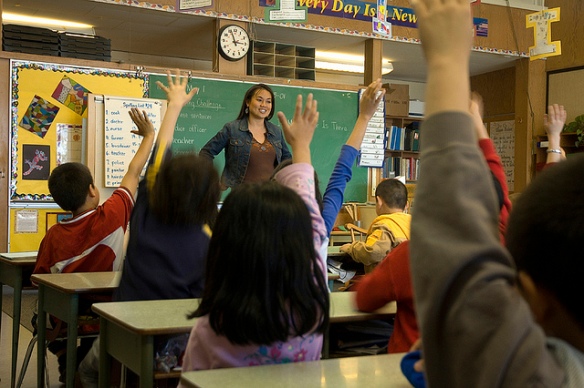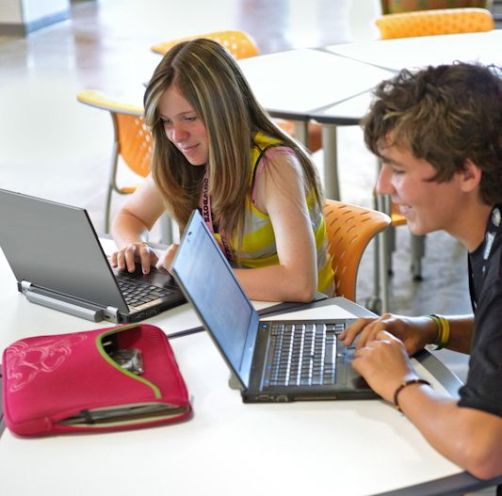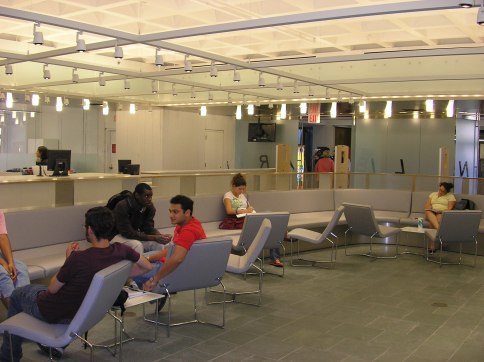 Photo by audiolucistore
Photo by audiolucistore
There’s no doubt that today’s school designs are taking many cues from today’s workplaces. But are there also important lessons we can learn from teachers and students, about work? We think there are!
For starters, here are five truths great teachers know that translate to the workplace. Once you get going down this road, you’ll probably think of even more. Share them with us in the comments!
1. Different people are, well, different.
Teachers have long understood that different kids learn in different ways. Most researchers refer to three different learning styles: Visual, kinesthetic, and auditory.
So what makes us think that we outgrow our natural learning styles when we become adults? Or that all adults work best in the same exact way? Workplaces, just like classrooms, need to consider different learners when designing their spaces—especially kinesthetic learners who need movement for their brains to function at their best.
For more teaching tips for all three types of learners, check out this post.
2. Energy is a positive thing—it shouldn’t be squelched.
Teachers know better than anyone that there are certain children who have trouble sitting still. And we all know there are certain times of day when it’s hard for almost anyone to sit still. Just reading the following description of a traditional classroom format is enough to make many (if not most) of us fidget and squirm:
“Peek into most American classrooms and you will see desks in rows, teachers pleading with students to stay in their seats and refrain from talking to their neighbors. Marks for good behavior are rewarded to the students who are proficient at sitting still for long periods of time.” (The Atlantic)
But today’s best teachers, like Dawn Casey-Rowe who wrote the Edudemic post “Avoiding Back to School Brainfreeze,” know it’s possible to harness all that that energy rather than fight it:
“By planning active classes, the can’t-sit-stills use their energy and add to the class…. Positive energy can be harnessed into learning.” (Or working!)
3. Spaces have the power to promote engagement.
Educational research shows that how the classroom is designed, and how much freedom children have within that space, can make all the difference in student engagement, which can make all the difference in student success.
In fact, according to a FastCoDesign article, research found that “classroom design could be attributed to a 25% impact, positive or negative, on a student’s progress over the course of an academic year.”
Workplaces should take a cue from the research and consider how the design of our workspaces might be impacting engagement—and success—at work.
4. Offering choices increases ownership.
The link between “ownership” and “learning” is often overlooked, but it’s important, as Annie Murphy Paul explains in her post “Designing the classroom to enhance learning.”
“Design features that allowed pupils to feel a sense of ownership towards their classroom also helped them to learn…. Pupils benefited from a range of activity zones within a single classroom, allowing different types of learning to take place at the same time.”
In workplaces, offering a variety of choices of where to work is becoming increasingly important. That sense of choice and ownership impacts people in a variety of ways, from physical wellness and concentration to collaboration.
Another recent article at the website Edudemic encourages teachers to ask questions like these when they’re arranging furniture and setting up their classrooms:
“Is your management style and space designed to keep students quiet and in their place, or does it give permission and ownership to the students? What choices do students have about where and how they work? Do you want your students to feel free, creative and enabled? Or, structured, restricted and rule-bound?”
Those same questions might be good ones to ask within the workplace, as well—just read the above paragraph again, replacing “students” with “employees.”
5. Movement is the key to health—and learning.
“Give students the chance to get out of their seats. Movement does wonders for the brain!” says a fifth grade teacher in an Edudemic article about engaging students in the classroom.
“Movement is the key to learning,” another article explains. “Students cannot sit still for very long before the blood and oxygen flow to their brains significantly slows down, thereby slowing down the learning process.”
And a 2008 study found that many children actually need to move to focus during a complicated mental task.
As we grow into adulthood, we definitely get better at sitting still, thanks to cultural norms and our slowing metabolisms. But that doesn’t mean we are completely different creatures than we were as school children. We still think and learn in different ways; we still have energy that can be channeled for good; we still like having options and ownership; and the spaces we spend most of our days in still impact our bodies and minds, for better or worse.
Most importantly, our bodies still function in the same general ways: Movement increases blood flow, which sharpens your mind—whether you’re five or 50, in a classroom or a workplace.






